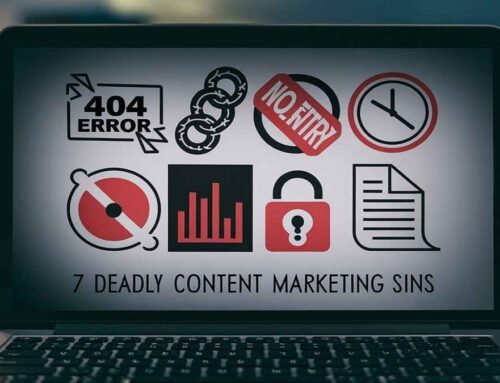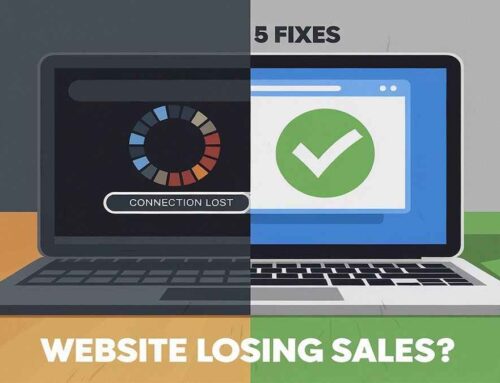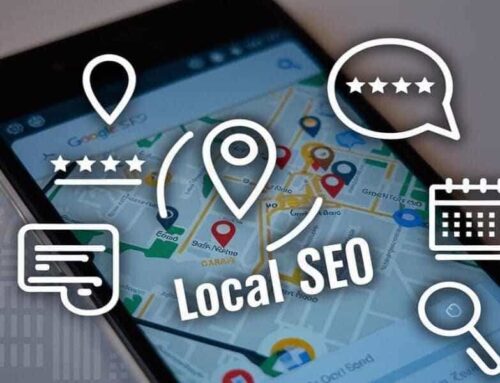
What is Ethical Branding?
Ethical Branding is the practice of building a brand identity rooted in transparency, integrity and social responsibility. It goes beyond profit-driven motives to prioritize values like fairness, sustainability and respect for people and the planet.
Ethical brands align their actions with their messaging, ensuring products, labor practices and environmental impact reflect their stated commitments. This includes fair wages, eco-friendly materials, honest marketing and accountability for supply chains.
Consumers increasingly favor brands that demonstrate authenticity and purpose, rejecting “Greenwashing” or hollow claims. Ethical branding fosters long-term trust, loyalty and emotional connections by addressing societal challenges, from climate action to equity, while balancing business goals.
It’s not just a strategy but a moral compass, positioning brands as catalysts for positive change in a conscious marketplace.
Setting the Scene: The Rise of the Skeptical Consumer
The digital age has transformed the landscape of information and consumer behavior. With just a few clicks, consumers can access a wealth of information about a product or company, significantly amplifying their awareness and expectations.
The result? A dramatic shift in the consumer-brand dynamic. Today, consumers demand more than just quality products, they seek brands that mirror their values, act responsibly and contribute positively to society. According to a report by Havas Group, 77% of consumers prefer to buy from brands that share their values.
Moreover, the rise of social media and review platforms has made brand transparency even more critical. One misstep can lead to a public backlash that might take years to recover from. Consumers are watching and they are scrutinizing.
Understanding Ethical Branding
Before we dive into the strategies brands can employ, let’s first decode what ethical branding truly means. Ethical branding is the practice of aligning a company’s values and principles with its marketing, operations and product offerings. It’s about being transparent, authentic and committed to doing what’s right – not because it’s a trend, but because it’s the responsible thing to do.
Essentially, ethical branding revolves around these core principles:
- Transparency: Being open about your business practices, from sourcing materials to employee treatment.
- Authenticity: Staying true to your brand’s core values and not masking them for financial gain.
- Accountability: Taking responsibility for your actions and their impact on society and the environment.
- Sustainability: Prioritizing practices that are environmentally friendly and promote long-term ecological balance.
- Fairness: Ensuring that all stakeholders – including employees, customers and suppliers – are treated fairly and equitably.
Why Ethical Branding Matters
In the current era of skepticism, where trust in institutions is dwindling, ethical branding is vital for several reasons:
- Building Trust: Ethical brands demonstrate integrity and responsibility, qualities that foster trust and loyalty among customers.
- Differentiation: In a crowded marketplace, ethical branding can distinguish your business from competitors who might not prioritize ethical practices.
- Customer Loyalty: Consumers are more likely to stay loyal to brands that align with their values and demonstrate ethical behavior.
- Resilience: Ethical brands can better navigate crises. When mishaps occur, brands with a solid ethical foundation tend to recover faster, as they have already built a reserve of goodwill.
- Long-term Success: Today’s consumers are willing to invest in brands that invest in the greater good. Ethical branding leads to sustained customer relationships, translating to long-term success.
The Blueprint for Building an Ethical Brand
Creating and maintaining an ethical brand requires a thoughtful and comprehensive approach. Here’s a blueprint to guide you:
- Define Your Core Values
To build an ethical brand, you must start with a clear understanding of your core values. These values should be the driving force behind every decision you make. They need to be genuine and resonate with both your team and your audience.
Case in Point: Patagonia, the outdoor clothing company, has built its brand on values of environmental sustainability and social responsibility. They’ve taken bold stands on issues such as climate change and their commitment to these values is evident in their products and practices.
- Embrace Transparency
Transparency is the bedrock of trust. Be open about your business practices, supply chains, sources of materials and even the challenges you face. Consumers appreciate honesty,and transparency can mitigate skepticism.
How to Do It: Publish annual sustainability and social responsibility reports that outline your company’s achievements and areas for improvement. Use your website and social media channels to share stories about your processes and people.
- Prioritize Sustainability
Sustainability isn’t just a buzzword; it’s a necessity. Consumers are increasingly concerned about the environmental impact of their purchases. Brands that prioritize sustainable practices are more likely to earn their trust and loyalty.
Steps to Take: Invest in eco-friendly materials, reduce waste and promote recycling. Partner with environmental organizations and support initiatives that aim to protect the planet.
Example: Unilever’s Sustainable Living Plan, which sets out to decouple the company’s growth from its environmental footprint while increasing positive social impact, serves as a prime example of sustainability in action.
- Foster Ethical Workplaces
A truly ethical brand isn’t just concerned with its external image but also deeply committed to fostering an ethical workplace culture. This encompasses fair wages, good working conditions and respect for employee rights.
How to Implement:
- Fair Compensation: Ensure that all employees, at every level, are compensated fairly and given opportunities for growth and development.
- Inclusive Environment: Promote a culture of inclusivity and diversity. This involves implementing policies that prevent discrimination and encourage equal opportunities.
- Employee Engagement: Actively engage with your employees, listen to their feedback and make them feel valued and heard.
Example: Ben & Jerry’s, the famed ice-cream maker, has a strong reputation for its progressive business practices, including fair trade certification, advocating for LGBTQ+ rights and prioritizing employee welfare.
- Engage in Ethical Marketing
Marketing is where brands often face the greatest scrutiny. Ethical marketing means being honest and not misleading your customers. It also means respecting their privacy and not exploiting vulnerabilities.
Best Practices:
- Honest Advertising: Ensure all advertising is truthful, not exaggerated and does not make false promises.
- Responsible Data Use: Respect consumer privacy and ensure data collected is used responsibly and ethically.
- Socially Responsible Campaigns: Avoid marketing campaigns that exploit negative stereotypes or promote unhealthy lifestyles.
Example: Dove’s “Real Beauty” campaign celebrates diversity and promotes body positivity, steering away from conventional and often unattainable beauty standards set by the industry.
- Be Accountable
Accountability is crucial for an ethical brand. When mistakes happen – and they will – take responsibility, make amends and clearly communicate the steps you’re taking to prevent future issues.
Proactive Steps:
- Have a Crisis Plan: Develop a crisis management plan that clearly outlines how your company will respond to ethical or operational lapses.
- Public Apologies: If an error occurs, issue a sincere, public apology outlining the mistake and how you plan to address it.
- Corrective Measures: Implement corrective actions and keep your customers informed of the progress.
Case Study: Toyota’s handling of their recall crisis in the late 2000s showcased accountability in action. They took full responsibility, issued public apologies and implemented robust measures to prevent future issues.
The Impact of Ethical Branding
The benefits of embracing ethical branding are manifold. Companies that invest in ethical practices often see far-reaching impacts:
- Enhanced Reputation: As ethical values become integral to business operations, the company’s reputation strengthens, attracting loyalty and can even serve as a magnet for top talent.
- Customer Loyalty: Ethical branding helps convert first-time buyers into lifelong customers who champion your brand.
- Premium Pricing: Many consumers are willing to pay more for products from ethically-minded companies. The perceived value of such brands often justifies a higher price point.
- Reducing Operational Risks: Ethical practices reduce the risk of labor disputes, environmental penalties and other operational risks that can damage a company’s bottom line.
- Stronger Community Ties: Engaging in social and environmental initiatives helps build better community relations, fostering goodwill and potentially leading to collaborative opportunities.
Real World Applications: Brands Leading the Charge
To illustrate the power of ethical branding, let’s consider a few companies that are excelling in this realm:
Patagonia: As previously mentioned, Patagonia stands as a shining beacon of ethical branding. Their mission, “We’re in business to save our home planet,” underpins all their actions. The company donates a portion of its profits to environmental causes, encourages product lifecycle extension through initiatives like “Worn Wear,” and has taken strong political stances to protect public lands.
TOMS Shoes: TOMS revolutionized social entrepreneurship with its “One for One” model, where a pair of shoes is donated for every pair sold. They’ve expanded their mission to provide clean water, safe birth kits and eye care to those in need, reinforcing their commitment to social responsibility.
LEGO: LEGO is a company dedicated to reducing its environmental impact. They’ve pledged to achieve 100% sustainable packaging by 2025 and are working towards using sustainable materials in all their products. Their adherence to these principles has solidified their ethical brand image among families worldwide.
Challenges and Criticisms
While the rewards of ethical branding are clear, the journey is fraught with challenges. Here are a few of them.
- Cost: Ethical practices often entail higher costs, be it through sustainable materials, fair wages or corporate social responsibility (CSR) initiatives.
- Greenwashing: This is where a company falsely conveys the impression of being environmentally friendly. Consumers are increasingly savvy and can see through insincere efforts.
- Balancing Profit with Purpose: Finding the balance between driving profitability and adhering to ethical practices can be difficult. Companies must look for ways to integrate the two seamlessly.
- Consistency and Longevity: Ethical branding is not a one-time effort. It requires consistent dedication and a long-term commitment. Keeping up with evolving standards and consumer expectations can be an ongoing challenge.
Addressing The Challenges
- Investment in Long-Term Gains: While adopting ethical practices may entail upfront costs, the long-term gains in brand loyalty, customer retention and risk mitigation often outweigh these expenses.
- Authentic Communication: Avoid greenwashing by ensuring all sustainability claims are backed by factual evidence and third-party certifications. Transparency is key in maintaining credibility.
- Strategic Integration: Look for synergies between profit objectives and ethical practices. For instance, reducing waste can lower costs and investing in employee welfare can boost productivity.
- Regular Re-evaluation: As societal values and market dynamics evolve, regularly revisit your ethical strategies to ensure they remain relevant and effective.
Ethical Branding in Digital and Social Media Era
The digital age, while introducing new challenges, also offers powerful tools for promoting an ethical brand. Social media, in particular, provides an avenue to engage with consumers, share your ethical efforts and receive real-time feedback.
Here are some ways to leverage digital platforms for ethical branding:
- Storytelling: Use platforms like Instagram, Facebook and YouTube to tell compelling stories about your ethical practices. Show behind-the-scenes looks at sustainable sourcing, community projects and employee stories.
- Engagement: Engage with your audience authentically. Respond to comments and inquiries, take feedback seriously and show your commitment to improvement.
- Influence and Advocacy: Partner with influencers who align with your brand values. These collaborations can amplify your ethical message to a wider audience.
- Transparency Tools: Utilize features like Instagram Stories, live Q&A sessions and blog posts to maintain transparency. Share your successes and acknowledge your challenges openly.
- Educational Content: Create content that educates your audience about the importance of sustainability, fair trade and other ethical practices. This not only builds trust but also aligns your brand with sophisticated, morally conscious consumers.
The Future of Ethical Branding
As we look ahead, the importance of ethical branding is only set to increase. The modern consumer is more informed and connected than ever, with a growing expectation that brands play a pivotal role in addressing global challenges.
Key Trends to Watch:
- Greater Accountability: Increased regulations and intensified scrutiny from consumers will push brands to be more accountable for their business practices.
- Technological Integration: New technologies like blockchain could enhance transparency in supply chains, providing consumers with reliable information about product origins and manufacturing processes.
- Collaborative Initiatives: Brands will increasingly collaborate with NGOs, governments and other organizations to amplify their impact on social and environmental issues.
- Holistic Approach: Ethical branding will evolve to encompass a more holistic approach, integrating diverse aspects such as mental health, data privacy and digital well-being.
- Consumer Empowerment: Innovations like interactive apps and platforms will empower consumers to make more informed decisions, further aligning their purchasing power with their values.
Conclusion: The Ethical Imperative
In an age of skepticism, building trust with consumers is a complex, ongoing endeavor that demands genuine ethical branding. It necessitates a commitment to transparency, sustainability and social responsibility beyond mere rhetoric or marketing gimmicks.
For brands, the journey towards ethical branding is not without its challenges, but the rewards are profound. Those who successfully integrate ethical principles into their business operations will not only cultivate deep, lasting relationships with their customers but also contribute positively to society and the environment.
The question then is not whether your brand can afford to invest in ethical practices, but whether it can afford not to. As consumers increasingly hold businesses accountable for their impact, ethical branding is not just a strategic advantage but a fundamental business imperative.














